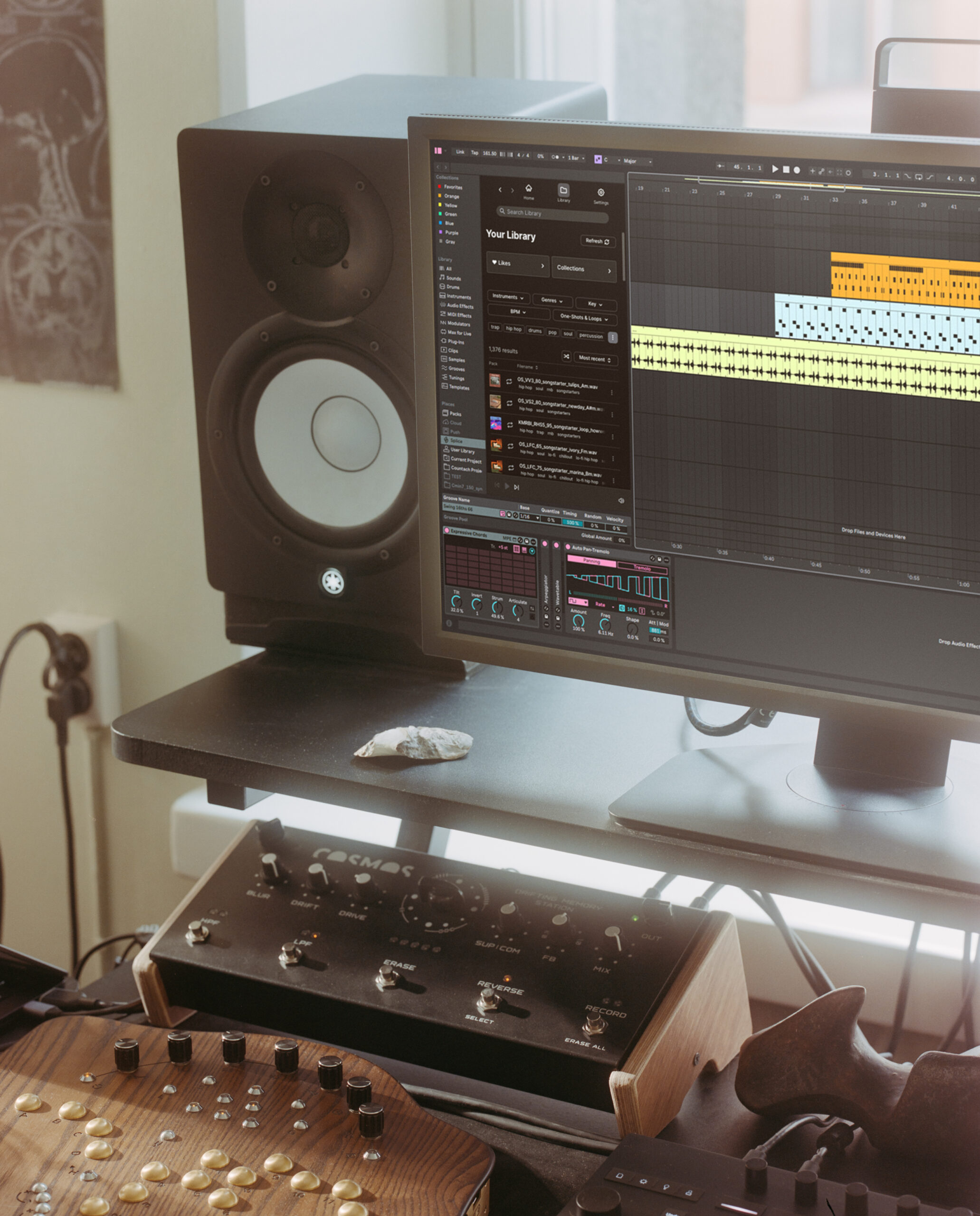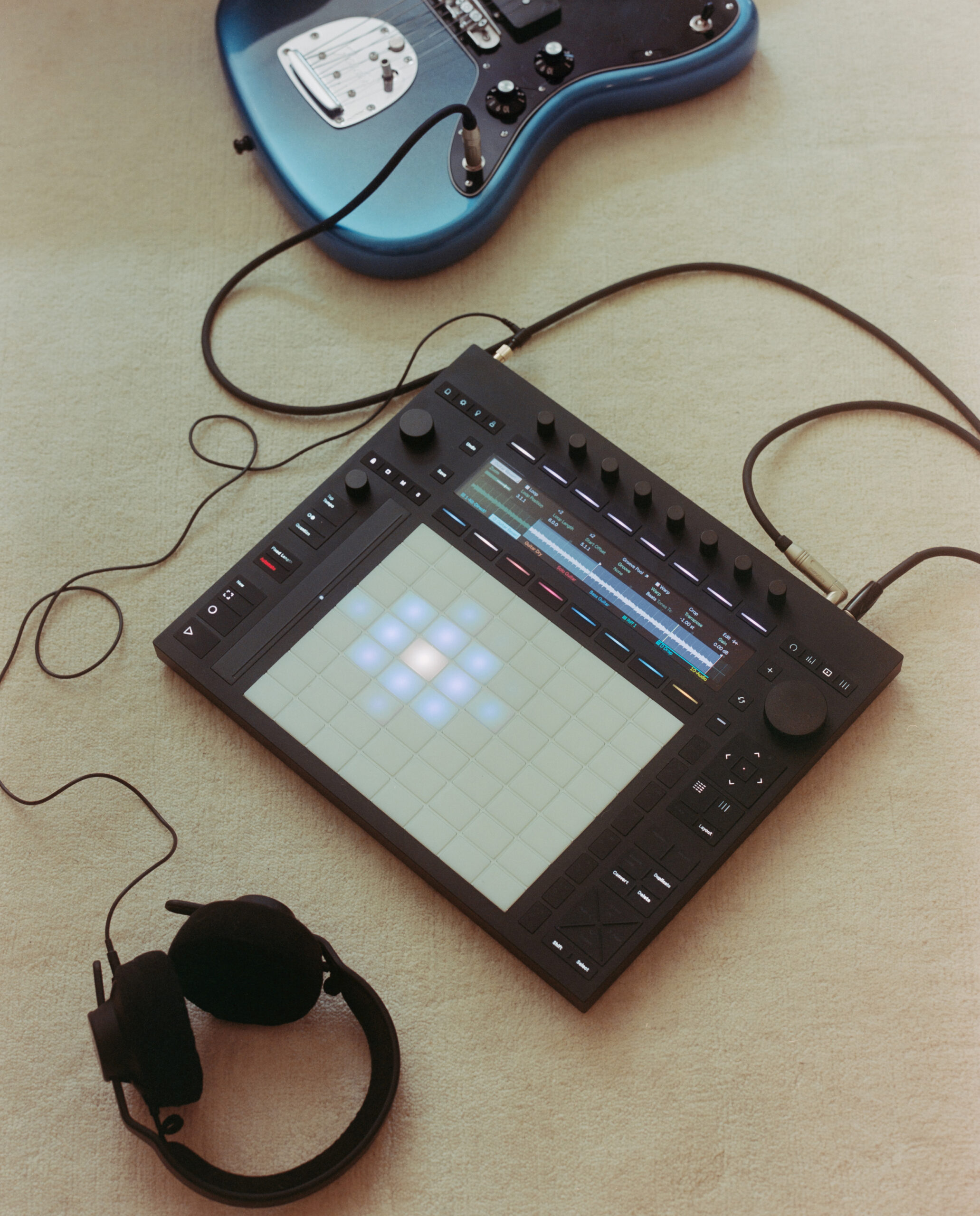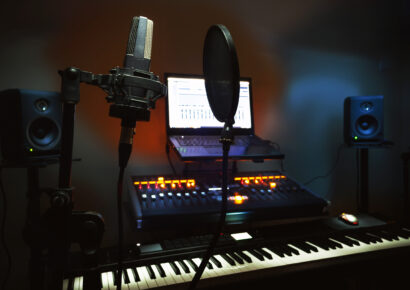The new public beta for Live 12.3 tackles the friction points that have been slowing producers down for years. From built-in stem separation to Splice integration and expanded Push 3 capabilities, this update focuses on removing the barriers between your ideas and the finished track.
Since its Berlin debut in 1999, Ableton Live has fundamentally reshaped the way music is made. This software didn’t just offer another way to record and arrange – it introduced an entirely different philosophy, one where studio production and live performance weren’t separate activities but two sides of the same creative process.
Catch up on all the latest features here.
With Session View’s non-linear approach, producers were finally freed from the tyranny of the timeline, and it was stable enough to actually perform live with, something that was previously unimaginable. Over two decades later, Live’s influence is visible everywhere: in bedroom studios, festival stages, university production courses, and the DNA of nearly every DAW that’s followed.
The same musicians who founded Ableton in 1999 still lead it today, and that continuity shows. They’ve built a global community around Live, Push, Link, Note, and Move—tools designed by people who actually make music. Resources like Learning Music and Learning Synths have made production concepts accessible to thousands who previously thought they needed a degree to get started. The mission never wavered: eliminate whatever stands between your ideas and the music, whether you’re in a bedroom or on a festival stage.
Ableton’s now opened up public beta testing for Live 12.3, and this update feels less like ticking boxes and more like fixing things that have been bugging producers for years. The headline feature – stem separation powered by Music.AI algorithms – finally brings one of modern production’s most requested tools directly into Live, letting Suite and Push Standalone users pull out vocals, drums, bass, and other elements from any audio clip without leaving the DAW.
This isn’t Ableton in catch-up mode. Stem separation has become essential for remixes, sample work, creative reprocessing – all of it. But it’s always meant leaving your project, bouncing files to external services or launching separate apps. Now it’s right there in Arrangement View, Session View, and the Browser. Drop in a reference track, isolate the drums, and your reverse-engineering production moves in seconds.

For Splice subscribers, Live 12.3 brings the entire Splice library into the Browser. Auditioning samples in context has always been what Splice does best, but all that downloading, importing, and organising can be a bit of a pain. The integration makes it way easier to audition samples in sync and key with your project, keeping you in the zone instead of jumping between apps.
Search with Sound takes things even further. The feature analyses what you’re already working with and finds samples that match your track’s rhythms and harmonies. All you need to do is drag and drop audio from a clip or time selection, and Splice’s algorithm surfaces samples that actually fit. It’s the kind of feature that sounds a bit gimmicky until you use it, and then you wonder how you managed without it.
The implications are pretty huge. Instead of spending twenty minutes scrolling through kick drums trying to find one that sits right, you can isolate a section of your track and let the algorithm surface candidates that already work. For anyone working to tight deadlines or just trying to keep momentum going, this removes a massive source of friction.
Live 12.2’s Bounce to New Track was useful, but 12.3 makes it even more powerful. Now you can bounce whole Group tracks in place, or just sections, with all your processing baked in. This addresses something that’s bugged producers forever: complex Group chains destroy your CPU, but committing them to audio meant losing the ability to adjust things down the line.
Paste Bounced Audio takes the same approach. Grab any clip or selection, paste it as fully rendered audio wherever you need it, and all your effects and processing come along for the ride. Sounds straightforward, but it opens up creative moves you’d normally need workarounds for. Duplicate a vocal, paste it bounced, then destroy the copy with completely different processing for harmonies or call-and-response parts. The original stays pristine while you experiment freely.
These might seem like small wins, but they show Ableton understands how producers actually work. Being able to quickly commit processing to audio while keeping the original intact makes experimentation a little less scary. You can try aggressive resampling or destructive processing without worrying that you’ll lose your starting point.
Auto Pan-Tremolo gets a complete overhaul in the new update with a refreshed UI, expanded modulation controls, and easier access to tremolo effects. The device has been part of Live’s toolkit for years, but the interface always looked a little dated. This update brings it in line with Live’s modern devices, making parameters clearer and modulation routing more intuitive.
What matters more is that Auto Pan-Tremolo is finally coming to Move, Note, and Live Lite. Ableton’s been doing this consistently lately – taking tools that were previously Standard and Suite exclusives and opening them up to everyone. It’s a clear statement: creative tools shouldn’t be locked behind price tiers.
Iftah’s new Generators Pack brings two purposeful MIDI tools: Sting and Patterns. Sting is based on a well-loved acid bassline generator, bringing those classic 303-style melodic patterns that are unpredictable, hypnotic and perfectly imperfect directly into Live’s MIDI world. Patterns tackles percussion, delivering instant rhythmic variations that give electronic tracks their pulse and energy.
Both devices follow Ableton’s recent approach: focused tools that nail one thing instead of sprawling multi-function devices trying to be everything. Sting doesn’t try to be a complete bass production suite; it generates compelling melodic patterns you can route to any instrument. Similarly, Patterns doesn’t replace your drum programming; it just speeds up the process of sketching rhythms, which can be notoriously tedious for some producers. This mirrors the broader shift in how Live’s been developing over the past few versions.
Instead of adding massive new instruments or completely reimagining the interface, Ableton’s been removing friction from specific tasks. The cumulative effect of these smaller additions can actually be more significant than one big headline feature.
Live 12.3 brings improvements to older content as well. The Sequencers Pack from 12.1 now supports reproducible arrangements, addressing what was probably the biggest grumble when it launched. Generative tools are excellent for exploring possibilities, but eventually you need to pin down what’s actually working. This update lets you capture and replay specific sequences. No more hoping the algorithm gives you that perfect pattern again.
The Expressive Chords Pack from 12.2 gets a Chord Edit mode that significantly changes how useful it is. You can transpose selected chords within a progression now, experimenting with variations without rebuilding everything from scratch. The ‘Learn’ function extends this; input your own chord voicings and they’ll become part of the device’s memory. Expressive Chords transforms from a preset-only tool into something genuinely adaptable. The pack’s harmonic vocabulary becomes a starting point rather than a limitation.
Perhaps most significantly, all built-in instruments, audio effects, and MIDI effects in Live now have an A/B comparison tool. You can set two different parameter states and switch between them instantly to evaluate which works better. This might seem trivial, but anyone who’s spent twenty minutes tweaking a compressor only to realise the original settings were better will immediately get why this matters.
The A/B feature can shift your entire mindset around mixing and sound design. You can try alternatives without the usual commitment anxiety, and just snap back to where you started if it’s not working. This removes that barrier that’s probably killed more good ideas than bad ones: the fear you’re about to wreck something decent while hunting for something great. We’ve all stared at that compressor, wondering if we should hit undo.
Push 3 users get some of the most significant updates in Live 12.3, with features that expand what’s possible with the hardware. The new XYZ layout means you can shape sounds by sliding your finger across the expressive pads while playing, with pressure adding punch-in effects. This transforms the Push from a grid controller into something closer to an instrument, where how you physically play shapes the sound in real time.

Rhythm Generator offers a different take on Drum Racks, built around four vertical sliders for pattern creation. Rather than programming beats the traditional step-by-step way, you’re shaping patterns through physical gestures – moving sliders while the rhythm plays beneath your fingers. It’s genuinely one of those things that’s hard to describe but immediately intuitive in practice. Your movements and the resulting rhythm feel directly connected.
Touch-sensitive step editing approaches velocity more sensibly. Hold the Accent button and slide across Push 3’s expressive pads to adjust velocities note-by-note or in groups. This addresses a long-standing frustration with hardware step sequencers: velocity editing has always meant navigating menus or carefully turning encoders. The touch-sensitive approach means you’re directly shaping what you hear.
Push Standalone now supports class-compliant audio interfaces, which is a bigger deal than it might sound. You can expand your inputs and outputs, record through your interface’s mic preamps, and even perform alongside DJ mixers, without a laptop. This transforms Push Standalone from a portable idea-catcher into something that could genuinely replace your computer setup.
These Push updates add up to something substantial. Each one moves the hardware away from feeling like a controller and toward feeling like an actual instrument with its own character. The XYZ layout, Rhythm Generator, touch-sensitive editing encourages an approach to music making differently, in ways that spring from the physical hardware rather than trying to replicate clicking around on a screen.
How much Live 12.3 changes your process depends on what kind of music you’re making. If you’re constantly working with samples and reference tracks, stem separation and Splice integration could completely reshape your approach. MIDI-focused producers get new creative angles through the Push 3 features and Generators Pack. Anyone dealing with CPU-heavy projects can take a deep breath due to smarter bouncing options.
What applies to everyone is the feeling that Ableton’s actually paying attention. They’re spotting friction points that have built up over the years and systematically smoothing them out.
Current Live 12 owners can jump into the beta programme now to test these features before the full release. Once testing wraps up, Live 12.3 will be free for all Live 12 license holders. Release notes and beta programme access are currently English-only, though full localisation will presumably follow the public release.
For producers wondering whether to dive into the beta, it largely depends on your stability needs. Beta software always carries some risk, but Ableton’s testing process has historically been pretty solid. If you’re working on huge projects with tight deadlines, waiting for the full release makes sense. If you’re between major projects or working on personal stuff, the beta offers early access to genuinely useful tools that’ll likely become essential.
Head here for more information on Ableton Live 12.3 public beta testing.

